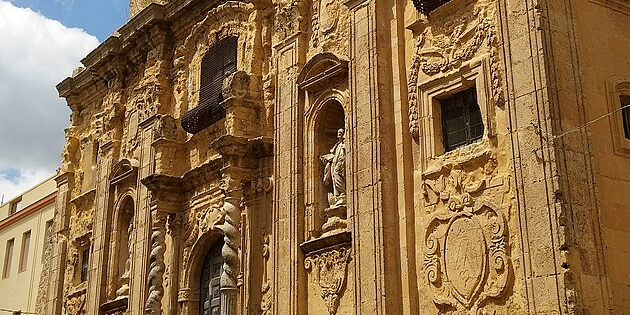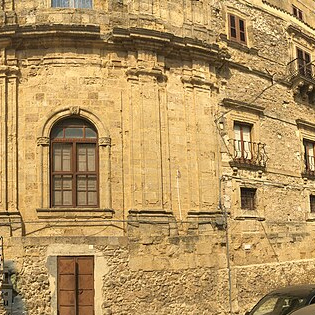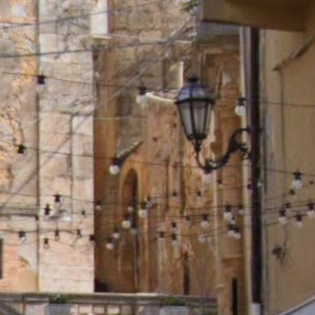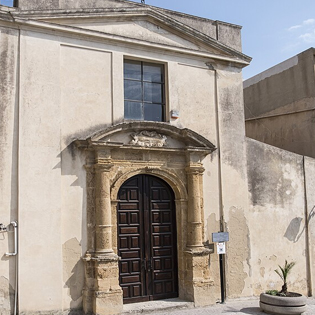Church of SS. Salvatore in Naro

philippe.hemmel - CC2.0
The Church of SS. Salvatore in Naro is an important place of worship in the village located along the ancient Via dei Monasteri, the current Via Dante Alighieri.
It was built, together with the adjoining Benedictine convent, around 1398, the year in which King Martin, the Younger and Queen Maria were in Naro. Over the centuries, the complex underwent various renovations: in 1530 the convent was expanded and the facade renovated; in 1750 the bell tower was erected; in the 1950s the ancient Benedictine Monastery was demolished to make way for an elementary school. Of the ancient and valuable building, only the corner corner remains, called Quarto Nobile, characterized by powerful pilasters and balconies adorned with rich brackets.
The façade, divided into two orders, is incomplete. The first order is decorated with fine carvings in Spanish style and is marked by six sturdy pilasters with piers and Corinthian capitals. In the center is the projecting portal flanked by twisted columns, added in the mid-seventeenth century, and surmounted by an elegant aedicule. Next to the portal are two niches with the abbey insignia that house the statues of San Benedetto da Norcia, on the left, and his sister Santa Scolastica, on the right, founders of the Benedictine Order. The second order, which remained incomplete, has four windows protected by thick iron grates. Next to the façade stands the massive bell tower, a work from 1750 that remained incomplete.
The interior, with a single nave, features a rich decoration of stucco and frescoes: the vault depicts episodes from the life of Saint Benedict and his sister Scholastica, a work from 1764 by Domenico Provenzani.
Among the works kept inside the church, of particular value are: a 17th-century black porphyry sarcophagus, supported by two lions, which contains the remains of Giuseppe Lucchesi, Marquis of Delia, inspired by the shrine of Frederick II, kept in the cathedral of Palermo; a white marble sarcophagus, containing the ashes of his son Assuero, who died at the age of 18, the last scion of the Dukes of Alagona; the marble statue of the Madonna del Rosario from 1498, commonly called the Madonnina di Trapani; an 18th-century wooden crucifix; the 18th-century statue of San Benedetto in Rococo style; the late 16th-century statue of San Eligio, of Mannerist inspiration; the valuable carved wooden altarpiece, the work of Giosuè Durando and Nicolò Bagnasco from 1795; an artistic case, in wood and glass, which houses the body of San Torpedo; the Nativity, the last large painting in the church, of the six executed in 1735 by Father Domenico Di Miceli.
The Benedictine convent is linked to a bloody episode that occurred in 1411, during the battles between the Latin and Catalan factions. The city of Naro, which sided with Bianca di Navarra, Vicar of the Kingdom of Sicily, was sacked by Bennardo Cabrera, head of the Catalan faction, who took possession of the castle, killed the castellan, Lopez Leon, and had the innocent nun Cannizzaro, abbess of the convent, buried alive because she was the castellan's cousin.


